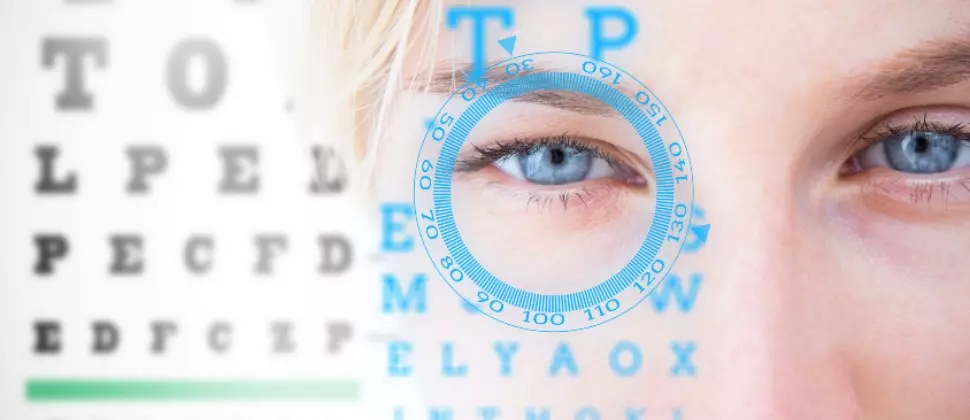17 Must-Know Facts About Cataracts & Cataracts Surgery
2022-06-12 | By Orcam Staff

June is here! Did you know June is Cataracts Awareness Month? If so, have you ever tried to search up the term “What is a cataracts?”, or “What are the cataract treatments?” on Google? There is a lot of information to read about this eye condition like the fact that people with Cataracts can see but their vision is very blurry. Here we have summarized the most vital facts you need to know.
1. Cataracts are a Clouding of the Lens in Your Eye

This can cause blurry vision and problems with color perception, but they are largely painless. In some cases, you may have to wear glasses or contact lenses after surgery to correct for this problem as well as poor eyesight if it is an issue before the condition developed. If you notice any changes in your sight over time that could be related to developing cataracts, make sure to visit your eye doctor so they can check on what’s going on!
2. The Surgery is One of the Most Common Surgeries
Did you know that cataract surgery is one of the most common eye surgeries performed? It’s a procedure that removes the cloudy lens and replaces it with an artificial one. Almost every year, 500,000 Americans receive this treatment and nearly 3 million are treated around the world. It’s usually a one-day procedure and results in improved vision for most people.
3. Cataracts can be Treated with Glasses, Contact Lenses, or Surgery
Treating the cataract with surgery is not the only option, but glasses and contact lenses can also help patients see things better. However, surgery is the most expensive treatment method. If you do not prefer to choose surgery, it is better to use other treatment methods.
4. The Typical Age for Cataracts Diagnosis is Between 50 and 60 Years Old

Since the lens of the eye starts to harden as we age, this affects our vision. In most cases, people after 50 years old will have the problem of age-related cataracts. Additionally, this problem may cause blindness without being treated in time. So, eye examinations are important for the elderly, and also have to be done regularly.
5. You Might not Notice any Symptoms Before Getting Diagnosed with Cataracts
Even if you don’t realize it, loss of sight detection can be common and that is why it’s important to get frequent eye checks done at your local Ophthalmologist. The initial stage might take longer and you wouldn’t even know the problem you’re facing, but don’t wait for it to be too late. Schedule your eye exam occasionally.
6. There are Two Types of Cataracts – Nuclear and Cortical
Nuclear cataracts form in the lens nucleus, while cortical cataracts develop in the center or cortex of the lens. The location of the cataracts is important since their removal has different surgical procedures. Additionally, the location will often dictate the severity of the vision loss.
7. Sun Exposure can Increase Your Risk of Cataracts

The sun’s ultraviolet (UV) rays are known to have a wide range of negative health effects. One effect that may be less well-known is that sun exposure can cause cataracts – a clouding of the lens in your eyes that impairs vision and cannot be reversed once it develops. The best protection against sun-related cataracts is to limit your exposure to UV light and wear sunglasses.
8. Nuclear Cataracts Form in the Center of the Eye Lens
As you age, the lens in your eye can become cloudy and harden. These changes are called nuclear cataracts. The nuclear cataract is a normal aging change. They do not cause symptoms unless they interfere with vision.
9. Cortical Cataract Forms on the Outside Layer of the Eye Lens
A cortical cataract is a problem where the eye lens changes its shape and becomes hard. Cortical cataracts do not affect the vision immediately. They may cause problems when they are removed surgically and replaced with an artificial lens. However, some cortical cataracts cause vision loss.
10. Cataracts can be Caused by Diabetes, Trauma, or Aging

People who have diabetes or an elevated blood glucose level are more likely to develop cataracts. The reason is that high blood sugar levels may trigger eye damage. Therefore, if you have diabetes, it’s essential to control your blood sugar level and have regular eye checkups to monitor the development of eye problems.
11. In About 10% of Cases, Cataracts may Recur After Surgery
After surgery, cataracts may come back in 10% of patients. However, you can reduce the risk by taking good care of your eyes after treatment. Surgery is not the ultimate solution for each person, and other solutions such as assistive devices are very helpful to the patients.
12. Cataracts can Be Genetic
Cataracts are indeed hereditary. Also, it may be part of multisystem genetic disorders. For example, a person with Lowe syndrome, or neurofibromatosis type 2. Sometimes the different parts of the condition are mixed. A person who has cataracts could also have other problems like developmental abnormalities in their anterior segment mesenchymal dysgenesis.
13. Smoking Adds to the Risk of Developing Cataracts

Researchers have not determined how nicotine might affect the progression of cataracts. However, they do know that inflammation and damage to collagen occur with aging. And smokers usually have more inflammatory cells in their bodies than nonsmokers do. If you are smoking and you also need surgery, your surgeon may tell you to quit smoking.
14. Animals Like Dogs can Have Cataracts
Cataracts can also occur in animals such as dogs and cats. In addition, this may even lead to blindness. Although there are several explanations for the cause of this condition, they all have the same factors which are related to nutrition and genetics. Your pet’s risk of developing eye problems increases as it ages.
15. Cataracts Surgery does not Take a Long Time
If you agree to get eye surgery, you should learn all the processes about it. The surgery does not take a long time, although the process is complex and takes several steps. The surgery takes approximately two hours, but you should start to prepare beforehand.
16. A Baby can be Born with a Cataracts

Even though cataracts occur over time and develop slowly, a baby can be born with it. It is a very rare scenario, but possible, a baby born with such an eye condition due to the lack of a specific enzyme involved in eye development. The latest research shows that babies born with this rare genetic condition have a very high chance of having a mother with a history of glaucoma in her family.
17. Cataracts Surgery may not be Covered by Your Health Insurance
There are insurance companies that help pay for surgery. They might use different rates, but each company has its own rules. Therefore, it is important to know whether surgery will be compensated for or not. You should check it out with the insurance company before you decide on it.
OrCam MyEye – The Best Assistive Device for People with Eye Conditions
OrCam MyEye is a revolutionary voice-activated device that attaches to any pair of glasses. It can read texts from books, smartphone screens, or from any other surface, recognize faces, identify products, and help blind or visually impaired people live a more independent life!
More Stories

Veterans Associations and How They Can Help You - OrCam
2024-06-24 | By OrCam Staff

Top AI Assistive Technologies Enhancing Accessibility | OrCam
Explore how AI-driven assistive technologies are revolutionizing accessibility for individuals with disabilities.
2024-05-29 | By OrCam Staff

AI in Education: Enhancing Accessibility for All Students | OrCam
AI is changing the face of education by enhancing accessibility. Explore practical applications and success stories in educational technology.
2024-05-28 | By OrCam Staff

Revolutionizing Accessibility: How AI & IoT Enhance Assistive Technology
Explore the impact of AI and IoT on assistive tech, transforming accessibility and empowering lives with smart innovations.
2024-05-28 | By OrCam Staff

Transforming Lives: AI & IoT in Assistive Tech | Personal Stories
Read inspiring personal stories about the transformative power of AI and IoT in assistive technology.
2024-05-28 | By OrCam Staff

Unlock Reading Freedom: Tech for the Visually Impaired
Explore the latest in assistive technology designed to empower visually impaired individuals with independence and confidence.
2024-05-23 | By OrCam Staff



